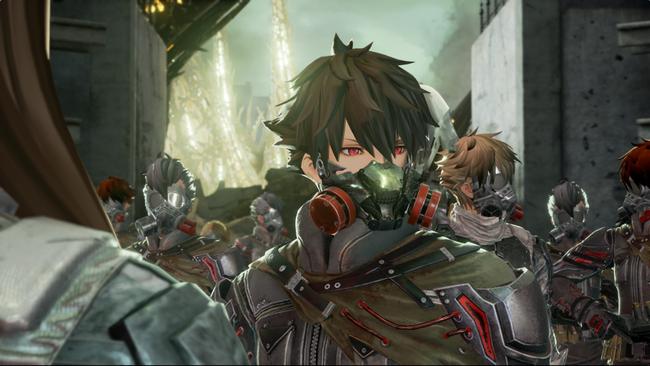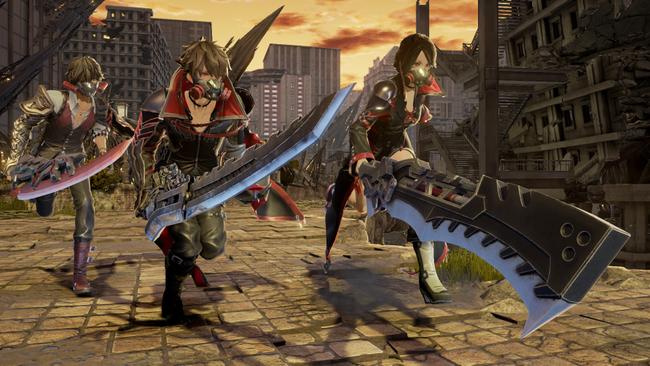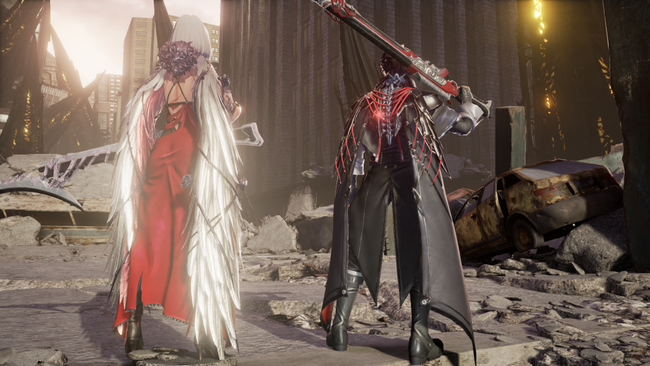
Code Vein Hands-On Impressions from E3 2018
I have been rather excited about the possibilities surrounding Code Vein since its initial announcement. As someone who has covered the God Eater series for the site, I have this sort of connection with it since the same development team worked on both properties.
Of course, even if they try to deny it, Code Vein lies in the overlapping center of a Venn Diagram where one large circle is anime fans and the other being Dark Souls fans. While it's definitely in need of additional polishing, there are some interesting aspects that may prove worthwhile enough to hook people in.

Let's start with the obvious - this game borrows heavily from the aforementioned Soulsborne series. It has the same core mechanics including backstabbing, parrying, and a near-identical control scheme where animation priority is the prime focus.
Even the abysmal landscape and incongruous architecture have found its way into a world where a cast of vampiristic anime characters carrying gigantic weapons must traverse treacherous terrain where deadly traps and incredibly aggressive monsters lay in wait.
Instead of bonfires, Code Vein has “Mistle” flowers (this game's version of the bonfire) that allow you to recover your health and level up, along with resurrecting the once-defeated enemies in the world.
But it’s easy for me to spend this entire article talking about how Code Vein compares to the Dark Souls series, as I used my limited time with the title trying to figure out what really sets it apart. Much like my time with Nioh, I tried to search for those important characteristics that can give it a unique identity among the copycats.

While I didn't get to spend enough time with Code Vein to understand the finer points of the combat or its story, everything started to click as I started to take in the different elements of the game. One of the more prominent features is the inclusion of an AI-controlled companion. By resting at a Mistle, I was able to swap between three different characters: Mia, Yakumo, and Louis, each providing their own particular brand of aid to the protagonist.
Not only do they fight alongside you in combat with a style that compliments the player’s, but they will sacrifice some of their own health to revive you on the spot if you take a fall in battle. This may give the developers an excuse to increase the level of difficulty, but I appreciate the gesture nonetheless as it meant I didn’t have to constantly see the Game Over screen - though it seemed to only prolong the punishment.
One of the more impressive facets of the game is the wide variety of defensive and offensive spells your AI-controlled partner has at their disposal. These “gifts” as the game calls them uses a type of resource called ichor. As I fought the hordes of demons, I could see my ally dynamically buff our group when things started to get dire while unleashing some powerful magic to drain the enemy of their precious ichor to continue the onslaught.

As I made my way through the hordes of grotesque monsters, I soon came upon the boss of the area - the Invading Executioner, a tall and imposing mistress wielding a sharp spear with impressive reach. When she wasn’t busy launching water-based attacks in my direction, she was attempting to catch me off guard with a swift sweeping attack that spanned the length of the battle arena.
The aforementioned gifts came in real handy as I purposefully kept my distance, far from the reach of the spear, while letting my companion handle much of the heavy lifting.
For Mia, this meant alternating between ranged attacks and attack-boosting spells. Meanwhile, Yakumo utilizes his massive HP bar and attack power to act as a tank while putting up a barrier when the boss got particularly aggressive. Finally, Louis, the agilest and most balanced of the crew, would cast drain magic on my weapon.
Much like God Eater, these partner characters feel essential in helping you tackle even the hardest enemies and come out the other side victorious. Even if you are able to defeat the boss on your own (as I did when my companion died during the skirmish), I felt certain I would not have been able to get to that point without their help.

Unfortunately, things don’t always work the way they are supposed to. There were moments where my AI associate sat there with nearly full health, refusing to revive me as I gasped my final breath because they were distracted by the boss. Other times, the hitboxes seemed to be completely nonsensical as attacks that were well outside my space still managed to land, causing me to scramble to recover.
At times, those same hitboxes were nonexistent as I swung through an enemy without dealing damage. In short, the same is still broken in some spots, and it’s not always pretty to look at. Yes, it’s designed to look grotesque, but outside of the character models, this won’t really compete with the leaders of the genre.
Be that as it may, I did come away from the demo with a strong sense of satisfaction having achieved victory over the Invading Executioner. Being able to experiment with all the different companions who will help me along my journey gave me a very good idea of what will lay in store for me with the final product.
Even if the quality isn’t quite where it needs to be, I am still very much looking forward to my time in the dark and twisted world found within Code Vein when it launches this September.